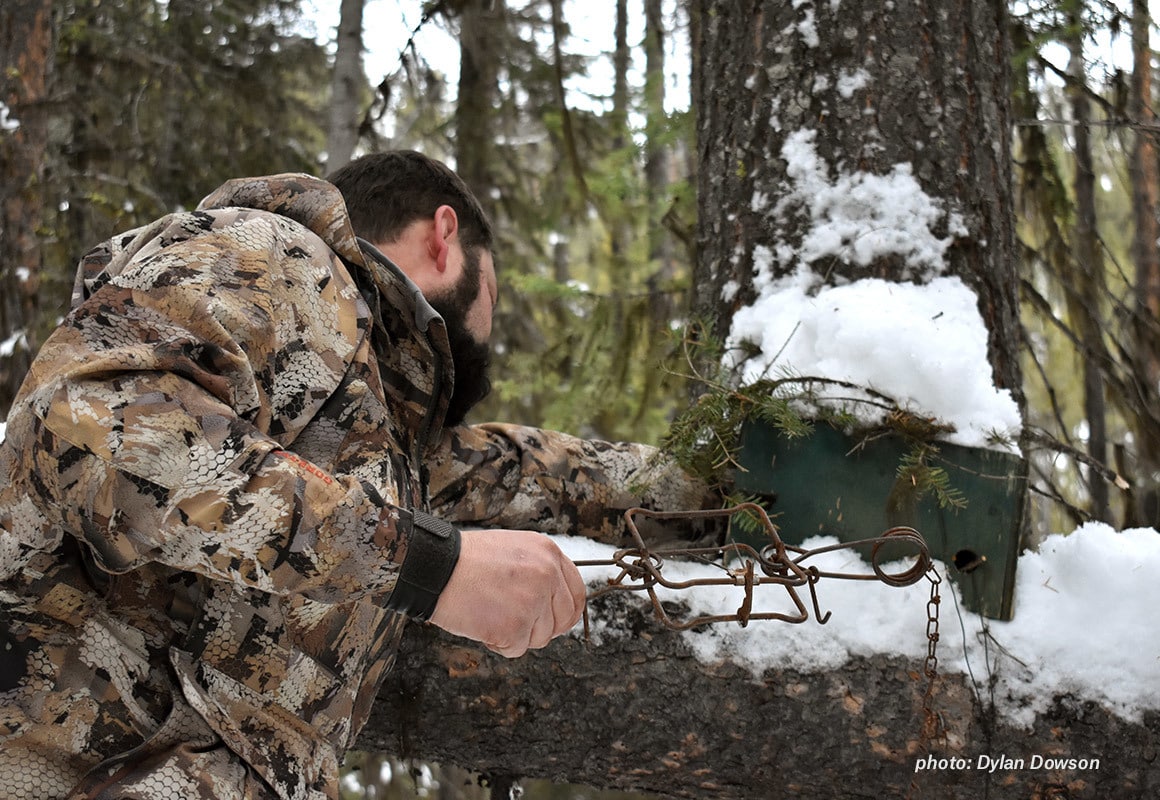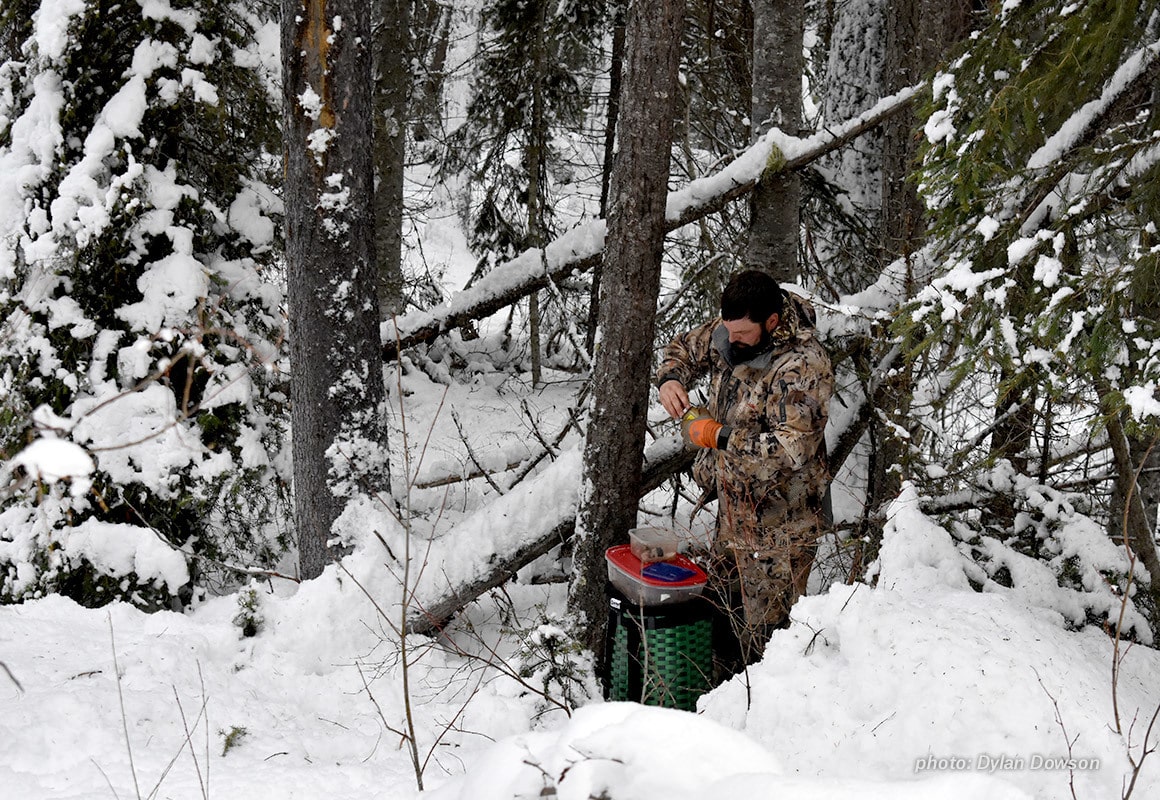Trapping has long been an integral part of wildlife management, cultural tradition, and outdoor exploration. While many perceive it as a relic of the past, modern trappers know the tools, technology, and strategies involved are more advanced and purposeful than ever.
Here, we explore types of hunting traps, the evolution of trapping techniques, and why trapping remains relevant today.
The Tools of the Trade: Types of Hunting Traps
Modern trapping revolves around three primary trap types: foothold traps, body-grip traps, and snares. Each serves a unique purpose, from humane wildlife management to the efficient capture of furbearers.

Foothold Traps
A cornerstone of trapping, foothold traps are versatile and effective. Activated when an animal steps on a trigger, these traps secure the animal by the foot using spring-loaded jaws. Foothold traps are further categorized into long spring, jump, and coil spring types. Foothold traps are instrumental in wildlife management, as they allow for the unharmed release of non-target animals when used correctly.
Foothold traps are also a vital research tool for biologists. Wildlife studies often rely on the safe capture and release of animals to track movements, assess population health, and better understand species behavior. From the Arctic tundra to southern swamps, foothold traps are a staple for trapping professionals and researchers alike.

Body-Grip Traps
Invented by Frank Conibear in the 1950s, body-grip traps are designed to be lethal. Because of this, they’re best used in water trapping scenarios, targeting species like beavers, mink, and muskrats, or in remote wilderness settings.
The innovation of body-grip traps has significantly improved animal welfare in trapping, making them a preferred choice for trappers seeking a quick, humane solution. Despite their lethal nature, careful placement and proper usage minimize the risk of capturing non-target species, especially near civilization, where there’s potential to catch the neighbor’s dog or cat.
A body-grip trap’s basic design includes two square jaws made of round steel in a box shape, powered by one or two springs of the same material. When the springs are compressed, the jaws form an opening for an animal to enter, tripping a trigger in the opening when it travels through. The jaws then close shut, leading to an almost instant kill.
The body-grip trap was truly an innovation that filled a need in the trapping world and has greatly enhanced trappers’ ability to address animal welfare issues and capture some furbearers more effectively.

Snares
Once simple wire loops, modern snares are highly customizable. Innovations like breakaway mechanisms and relaxing locks have reduced non-target captures, making snares an adaptable tool for a variety of trapping goals.
Snares can also be fairly controversial, due to their past reputation for catching non-target animals. But advancements in snare technology have made much of that controversy a thing of the past, and many states are expanding snaring opportunities for trappers who know how to use them right. For instance, where snares once would catch the occasional deer, today’s snares use a stop that limits loop size closure, thus eliminating deer capture. Also, when a large animal like a mountain lion or elk is captured, a breakaway allows them to power out of the snare, breaking it open and freeing themselves.
Additionally, using a relaxing lock instead of a kill-type lock allows a snare to hold an animal gently, effectively rendering the snare something we now call a “cable restraint.” In situations where a quick kill is desired, springs and poles can be used to make that happen incredibly effectively. What was once a simple wire loop has evolved into one of the most useful and adaptable tools at a trapper’s disposal.

The Role of Technology in Modern Trapping
Advancements in GPS and mapping technologies have revolutionized trapline management. Biologist Jeremiah Wood, a seasoned trapper, highlights the utility of the onX Hunt App, which allows trappers to accurately mark, track, and manage traps across vast and remote areas. Its features—such as Offline Maps—ensure seamless navigation and data backup, streamlining operations on the trapline.
“The ability to sync Waypoints to the cloud has been a game-changer,” Wood shares. “It eliminates the fear of losing track of trap locations and reduces the hassle of manual backups.”
Technology not only simplifies logistics but also enhances safety. Trappers working in remote or challenging terrain can rely on GPS tools to avoid getting lost, reducing risks during extreme weather or long trapline runs.

Why Trapping Matters Today
Though it’s not as common as it used to be, trapping still is alive and well in much of rural America, with an estimated 175,000 trappers nationwide. And while fur prices aren’t nearly as lucrative as they were when the old timers made their living harvesting fur, trapping remains as important in today’s society as it’s ever been.
Beyond its practical applications, trapping serves critical roles in wildlife management, animal damage control, and cultural heritage.
Wildlife Management
Trapping is a notable tool for conservation efforts, enabling biologists to monitor populations, manage predators, and even reintroduce species to their natural habitats. Tools like foothold traps have facilitated the recovery of species like otters and wolves, underscoring the ecological importance of trapping.
Damage Control
Unchecked populations of furbearers like beavers, raccoons, and coyotes can wreak havoc on infrastructure and agriculture. Trappers mitigate these issues, protecting crops, livestock, and property while maintaining ecological balance.
Beavers, for example, are notorious for flooding roads and fields with their dams, while coyotes pose a threat to livestock. Complex ecological concerns such as these require multi-prong solutions, and trapping serves as one part of the solution.

Trapping’s History and Heritage
Trapping’s roots run deep in American history, shaping the exploration and settlement of the country. In the 18th and 19th centuries, the fur trade lured explorers westward in search of valuable beaver pelts prized for their use in fashion and industry. This era marked the height of trapping as a central economic driver, with fur being a cornerstone of international trade.
Passed down through generations, trapping connects modern practitioners to a rich heritage of self-reliance, adventure, and a deep respect for the natural world. It’s not just a means to an end—it’s a way of life steeped in history and culture.
For many trappers today, the activity represents more than sustenance or livelihood—it’s a link to a bygone era of exploration and survival. This historical significance adds depth and meaning to the challenges and rewards of setting a trapline.
Personal Fulfillment
For many, trapping is more than a practical endeavor; it’s a cherished pastime. The anticipation of checking a well-planned trapline, the skill in choosing the perfect set, and the connection to nature all contribute to its enduring appeal.
For some, trapping is a family tradition. For others, it’s an opportunity to immerse themselves in the outdoors, develop self-reliance, and contribute to sustainable wildlife management.
Trapping for Sustainability and Connection
Trapping continues to blend skill, technology, and tradition in a way that resonates deeply with those who practice it.
Plus, the ongoing refinement of traps demonstrates that trapping is far from obsolete—it’s an evolving practice that honors its past while embracing its future.
For anyone curious about the world of trapping, there’s no better time to explore this rich and rewarding discipline. With the right tools, knowledge, and respect for the natural world, modern trapping offers an unparalleled way to engage with the outdoors.
header image: Day Six Outdoors